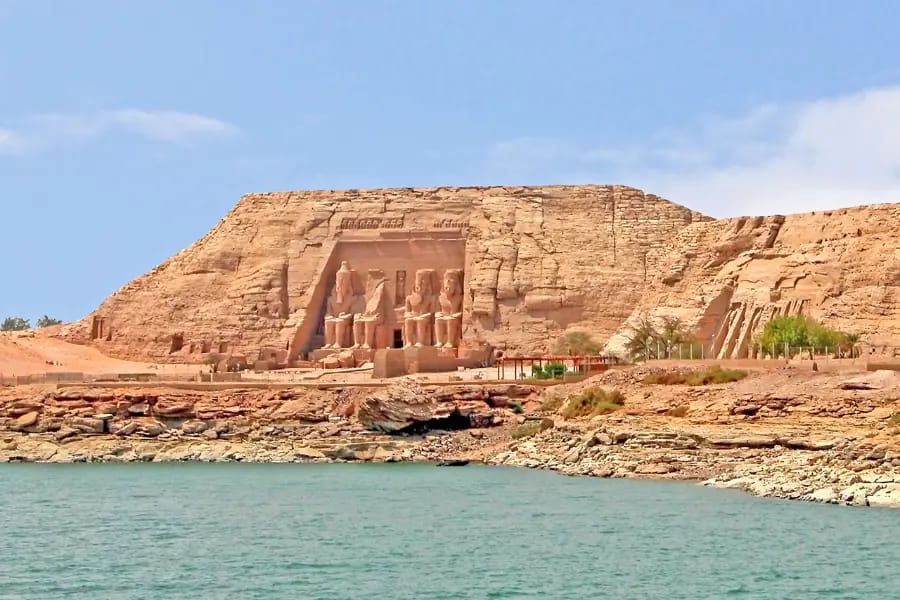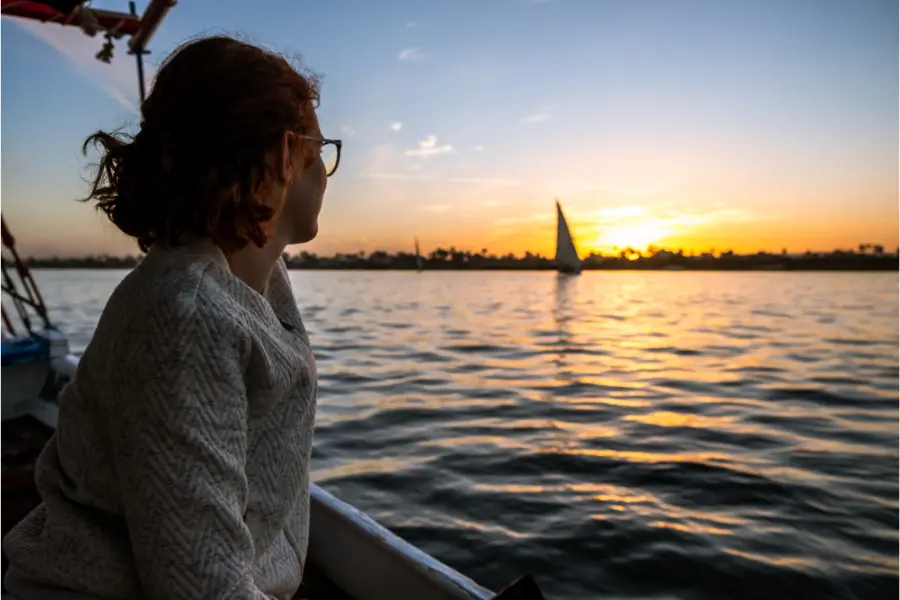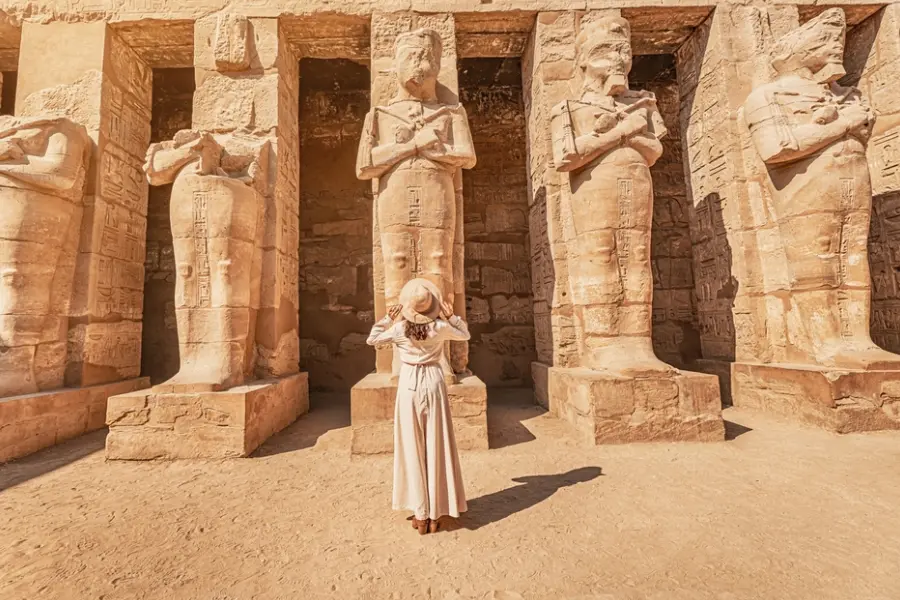Mosque of Ibn Tulun in Cairo – Egypt’s Timeless Islamic Monument
The Mosque of Ibn Tulun in Cairo is one of the oldest and largest mosques in Egypt, built in the 9th century by Ahmad Ibn Tulun. Known for its unique spiral minaret and vast courtyard, it is a masterpiece of Islamic architecture and a living symbol of Cairo’s title as the “City of a Thousand Minarets.”
In this guide, you’ll discover the mosque’s rich history, unique design, religious and cultural importance, visitor information, and fascinating facts that make it one of Cairo’s must-see landmarks.
Key Takeaways
- Mosque of Ibn Tulun is the oldest surviving mosque in Cairo, preserving its original form since the 9th century.
- Built between 876 and 879 AD by Ahmad Ibn Tulun, founder of the Tulunid dynasty.
- Features a rare spiral minaret, inspired by the Great Mosque of Samarra in Iraq.
- Located in Cairo’s Sayyida Zeinab district, near the Gayer-Anderson Museum.
- A symbol of Islamic Cairo, representing the city’s nickname “the City of a Thousand Minarets.”
History of the Mosque of Ibn Tulun
The Mosque of Ibn Tulun was commissioned by Ahmad Ibn Tulun, governor of Egypt under the Abbasid Caliphate and founder of the Tulunid dynasty. Construction began in 876 AD and was completed in 879 AD, making it one of the earliest Islamic monuments in Cairo.
The mosque was built on Jabal Yashkur (Hill of Thanksgiving), a site surrounded by legends, including the belief that Noah’s Ark came to rest here after the flood. Ibn Tulun designed it as the central congregational mosque of his new capital, al-Qata’i, which served as Egypt’s political and administrative center.
Despite the destruction of al-Qata’i when the Abbasids regained power, the mosque survived intact, making it the only remaining monument from the Tulunid dynasty. Over the centuries, it underwent restorations by later rulers, including Sultan Lajin in 1296, ensuring its preservation for future generations.
- 876 AD: Construction of the mosque begins.
- 879 AD: Completion of the mosque under Ahmad Ibn Tulun.
- 1296 AD: Major restoration by Sultan Lajin, including rebuilding of the pulpit.
- 20th century: Used temporarily as a factory and shelter before being restored by the Egyptian Antiquities Committee.
- 1990s: Comprehensive restoration by the Egyptian Ministry of Culture as part of Historic Cairo projects.
Architecture & Design of the Mosque of Ibn Tulun
The Mosque of Ibn Tulun is renowned for its vast open courtyard, arcaded halls, and distinctive spiral minaret, inspired by the Great Mosque of Samarra. Built mainly of red brick and gypsum, it is one of the earliest examples of Islamic architecture in Egypt that has survived in its original form.
- Courtyard: A large central courtyard surrounded by covered arcades, designed for communal prayers.
- Minaret: A unique spiral-shaped minaret, the only one of its kind in Egypt, reminiscent of Samarra’s minaret in Iraq.
- Fountain: A central ablution fountain used for ritual washing before prayers.
- Mihrab & Dome: A grand prayer niche (mihrab) with marble columns and a wooden dome with stained-glass windows.
- Materials: Constructed mainly from red brick, plaster, and wood, making it resistant to both fire and flooding.
- Decorations: Intricate plaster carvings, geometric wooden pulpits, and hollow windows with colored glass.
The mosque’s design reflects simplicity and grandeur. Its four walls, pierced by 19 entrances, enclose a serene space that exemplifies the harmony of Islamic architecture. The arcades are adorned with pointed arches and carved stucco patterns, some of the oldest in Cairo.
One of its most remarkable elements is the spiral minaret. Unlike any other in Egypt, it features an external staircase winding up the tower, allowing panoramic views of Cairo. This design is believed to have been inspired by Ibn Tulun’s birthplace, Samarra, linking the mosque to Mesopotamian influences.
The mosque has undergone several restorations, yet it has preserved its original architectural integrity, making it one of the best-preserved mosques in the Islamic world.
Location of the Mosque of Ibn Tulun in Cairo
The Mosque of Ibn Tulun is located in Cairo’s Sayyida Zeinab district, one of the city’s oldest neighborhoods. Its strategic location in the heart of Islamic Cairo makes it easily accessible and surrounded by other cultural landmarks.
The mosque stands on Jabal Yashkur (Hill of Thanksgiving), a site steeped in legend and history. According to tradition, it was here that Noah’s Ark came to rest after the Great Flood, adding to the mosque’s spiritual significance.
Visitors can combine their trip to Ibn Tulun Mosque with a tour of nearby attractions, making it a highlight of Cairo day tours. The mosque is within walking distance of the famous Gayer-Anderson Museum, which is housed in two beautifully preserved Ottoman-era houses.
- Gayer-Anderson Museum: Adjacent to the mosque, showcasing Islamic art, furniture, and artifacts.
- Sultan Hassan Mosque: One of Cairo’s grandest mosques, located a short distance away.
- Sayyida Zeinab Mosque: A revered religious site in the same district.
Religious & Cultural Significance
The Mosque of Ibn Tulun is not only an architectural marvel but also a symbol of Cairo’s deep-rooted Islamic identity. It has played an important role in religious, cultural, and even political life throughout its long history.
As the oldest surviving mosque in Cairo, it reflects the continuity of Islamic worship for over a thousand years. Generations of Egyptians have prayed within its vast courtyard, making it a living monument of faith.
Culturally, the mosque stands as a bridge between Egypt and the wider Islamic world. Its spiral minaret, inspired by the Great Mosque of Samarra, highlights the exchange of architectural ideas between Iraq and Egypt in the 9th century.
The mosque has also featured in popular culture and films, adding to its fame as one of Cairo’s most recognizable landmarks. For locals and visitors alike, it represents both spiritual devotion and cultural pride.
- Religious Role: A center for congregational prayers for more than 1,100 years.
- Cultural Symbol: A landmark of Islamic Cairo and Egyptian heritage.
- Global Influence: Its design connects Egypt to Islamic art and architecture in the wider Muslim world.
Visiting Information: Tickets, Hours & Tips
The Mosque of Ibn Tulun is open to visitors year-round, offering a chance to explore one of Egypt’s oldest and best-preserved Islamic monuments. Here’s what you need to know before your visit:
Tickets & Entry Fees
Entry to the Mosque of Ibn Tulun is free of charge for all visitors.
A voluntary donation of about EGP 60 (≈ £1.50 / $2) is encouraged to help with the mosque’s preservation.
If you wish to climb the iconic spiral minaret, it is customary to give the attendant a small tip, usually between EGP 50–100 (≈ £1.25–£2.50 / $1.50–$3).
Opening Hours
The mosque is generally open daily from 9:00 AM to 5:00 PM. During Ramadan and religious holidays, hours may vary slightly.
Tips for Visitors
- Wear modest clothing, as the mosque is an active place of worship.
- Photography is usually allowed, but always ask permission if photographing people.
- Visit early in the morning or late afternoon to enjoy peaceful surroundings and good lighting for photos.
- Combine your visit with the Gayer-Anderson Museum next door for a richer cultural experience.
Interesting Facts about the Mosque of Ibn Tulun
The Mosque of Ibn Tulun is full of unique features that make it one of the most remarkable Islamic monuments in Egypt. Here are some fascinating facts:
- It is the oldest mosque in Cairo that has survived in its original form since the 9th century.
- The mosque covers an area of 26,318 square meters, making it one of the largest mosques in Egypt.
- Its spiral minaret is the only one of its kind in Egypt, inspired by the Great Mosque of Samarra in Iraq.
- The mosque was built on Jabal Yashkur, a hill associated with the legend of Noah’s Ark.
- It has appeared in several films, including the James Bond movie The Spy Who Loved Me (1977).
- The mosque has been continuously restored, with major works during the Mamluk period and modern renovations in the 20th century.
- Its stucco decorations are among the oldest surviving examples of Islamic art in Egypt.
FAQs about the Mosque of Ibn Tulun
Here are the most common questions visitors ask about the Mosque of Ibn Tulun in Cairo:
When was the Mosque of Ibn Tulun built?
It was built between 876 and 879 AD by Ahmad Ibn Tulun, founder of the Tulunid dynasty.
Who built the Mosque of Ibn Tulun?
The mosque was commissioned by Ahmad Ibn Tulun, the autonomous governor of Egypt under the Abbasid Caliphate.
Why is the mosque famous?
It is renowned for its spiral minaret, vast courtyard, and being the oldest mosque in Cairo preserved in its original form.
Can visitors enter the mosque?
Yes, the mosque is open to visitors daily. Modest dress is required, and entry is subject to a small ticket fee.
Where is the Mosque of Ibn Tulun located?
It is located in the Sayyida Zeinab district of Cairo, on Jabal Yashkur, near the Gayer-Anderson Museum.
Conclusion
The Mosque of Ibn Tulun is more than just one of Cairo’s oldest mosques – it is a living monument that bridges Egypt’s Islamic heritage with its cultural identity. From its massive courtyard and iconic spiral minaret to its spiritual atmosphere, it offers visitors a rare chance to step back into the 9th century.
Whether you are passionate about Islamic architecture, intrigued by Egypt’s dynastic history, or simply exploring Cairo’s treasures, the Mosque of Ibn Tulun is a must-visit landmark. Its central location makes it easy to combine with nearby attractions like the Gayer-Anderson Museum and the Mosque of Sultan Hassan.
✨ Explore Cairo with Us
Plan your visit with Egypt Tours Group and discover the best of Islamic Cairo, including the Mosque of Ibn Tulun, historic mosques, and cultural landmarks – guided by experts who bring history to life.









